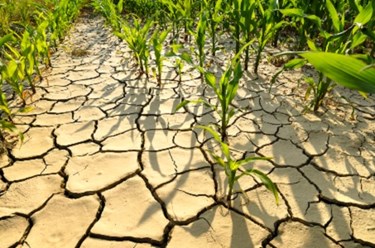How Is The Drought Affecting California's Agriculture?

By Sam Lewis

A report from the University of California, Davis, reveals California’s agriculture, thanks to groundwater reserves, is withstanding its worst drought in years. However, those water supplies must be protected in order for the industry to persevere long term
Last month, the University of California, Davis, (UC-Davis) released a study updating the drought’s consequences on California’s Central Valley farm production and predicting the economic fallout from it over the next two years. The drought, third-most severe to be recorded, has reduced California’s Central Valley farms to one-third their previous size. The farms’ saving grace is pumped groundwater replacing water lost from rivers and lakes. According to the study, some areas of California have doubled the groundwater pumping rate from 2013.
The results of the study show the agriculture economy of California has been resilient, but also show vulnerabilities of drought. This is highlighted by the state’s reliance on groundwater during droughts. “California’s agricultural economy overall is doing remarkably well, thanks mostly to groundwater reserves,” says Jay Lund, a co-author of the study and director Center for Watershed Sciences at UC-Davis. “We expect substantial local and regional economic and employment impacts. We need to treat that groundwater well so it will be there for future droughts.”
Through 2014, the study notes other findings of the droughts effects:
- Revenue lost during the drought has totaled $1 billion. An additional $500 million has been accumulated in pumping costs. This brings the total of direct cost to California’s agriculture at $1.5 billion, around 3 percent of California’s total agricultural value
- Through 2014, the drought has cost California $2.2 billion across all segments
- Seasonal and part-time employment has taken a hit. More than 17,000 jobs in agriculture have been lost in the state
- The state’s Central Coast, along with Southern California, will be less touched by the drought than previously thought. It is estimated that 19,000 acres of farms will be fallowed, bringing the lost crop revenue to roughly $10 million
- Food prices for consumers will go unaffected. California’s high-priced agriculture commodities — dairy products, nuts, and wine grapes — will rise in price due to market demand, not drought.
- The drought will likely continue through 2015
Should the drought carry on, groundwater will continue to be used to replace water lost at the surface. However, continued use will lead to decreased pumping capability with elevated costs, as well as more losses in revenue, due to the depletion of groundwater supply. Ironically, California is the only state in the U.S. that doesn’t have groundwater management agenda. “We have to do a better job of managing groundwater basins to secure the future of agriculture in California,” says Karen Ross, Secretary of the California Department of Food and Agriculture.
Learn how brewers are increasing efficiencies during water scarcity
UC-Davis’ Richard Howitt furthers that notion by saying, “A well-managed basin is used like a reserve bank account. We’re acting like the super-rich who have so much money they don’t need to balance their checkbook.” The future of California’s agriculture segment — producing almost half of fruits, nuts, and vegetables grown in the U.S., along with 25 percent of the nation’s dairy products — will be a rocky one if groundwater reserves are not protected as the drought continues. For now, the best the state can do is continue conservation practices and hope the dry trend comes to a screeching halt.
